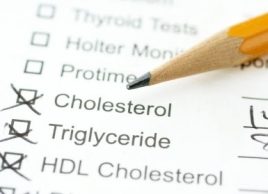
Infections that cause cancer
Scientists have discovered that infections-produced by viruses, bacteria or parasites-can trigger some cancers. Insidious and symptomless, these infections fester quietly and produce cellular changes that can result in malignancies.
“Globally, 21 percent of cancers are linked to infection,” says the German Cancer Research Centre’s Dr. zur Hausen, who discovered the link between Human papillomavirus (HPV) and cervical cancers.
Cervical, stomach and liver cancers are the major ones triggered by infection.
Exposure to the common sexually transmitted infection trichomoniasis nearly triples a man’s risk of developing a particularly aggressive, lethal form of prostate cancer. Caused by a parasite-Trichomonas vaginalis-the infection is silent in women. It rarely causes symptoms in males, either.
A study in 1975 showed that liver cancer occurred almost exclusively in people who had been infected with hepatitis B -the majority of whom were carriers with no symptoms of liver disease.
Get tested (and cured) for any of these infections, or avoid them in the first place by using protection during sexual activity.

Osteoporosis
Called the “silent disease” because it steals strength from your skeleton, osteoporosis has few warning signs-until suddenly you break a bone.
By the time you’re diagnosed, your bones will already have lost significant density, making them fragile and easy to break-often spontaneously or after a very minor accident.
Bone loss is mainly a depletion of the mineral calcium. It affects more women than men because the hormone estrogen plays a crucial role in the female body’s ability to use dietary calcium to build new bone. When you approach or are in menopause, the reduction in your body’s estrogen production deprives your bones of the calcium they need. Some 20% to 30% of bone loss in women occurs in the first five years after menopause. Osteopenia often develops during this critical time. Without treatment, this bone-thinning condition can lead to osteoporosis.
Ensure you’re getting enough calcium, doing strength-building exercises, limiting alcohol and caffeine and not smoking.

High cholesterol
Your risk for high cholesterol increases with age, although estrogen helps until menopause. Other risk factors include diabetes, an underactive thyroid, or a family history. Even though high cholesterol has no real symptoms, it is a major cause of coronary heart disease.
To cut your risk of high cholesterol, make simple dietary changes, such as cutting back on saturated fat intake. Limit red meat consumption, cut out processed foods and decrease cheese consumption to one to two times per week. Also introduce healthy fat sources into your diet, such as nuts and seeds. And get plenty of exercise.
Find out more about high cholesterol

Prediabetes
As many as six million Canadians can be considered to have prediabetes. The trouble is, many of them don’t know it. Prediabetes often has no symptoms at all. Yet if these people don’t take steps to control their blood sugar now, a diagnosis of diabetes within the next few years is highly likely.
Regular exercise, weight loss, changing unhealthy habits, getting enough sleep and testing blood sugar regularly can all help prevent, avoid and treat prediabetes before it turns into diabetes.
Find out what happens when prediabetes turns into diabetes

Ovarian Cancer
Ovarian cancer is hard to detect because there are no early symptoms, and later ones are vague and can mimic common disorders. In about 70 percent of cases, ovarian cancer is not diagnosed until it has spread to other parts of the body. At that stage, survival rates are between 20 and 25 percent. Women who are treated before the cancer has spread have an 85 to 90 percent chance of cure.
The average ovarian cancer patient is 61. Risk increases with age. If you have a close relative with ovarian cancer, your risk nearly triples. If you’ve had breast cancer, you’re more susceptible to ovarian cancer. You are at higher risk if you are of Western European or Jewish descent and also have a family history of breast cancer.
You can cut your risk by avoiding Hormone replacement therapy after menopause. Having children also decreases your risk. Each time a woman bears a child, her risk drops by 10 percent. Breast-feeding offers protection as well.
Read more about ovarian cancer

Chlamydia
Chlamydia is one of the most common sexually transmitted diseases. It often has no symptoms, but can cause infertility. Women may have pelvic discomfort on intercourse and bleeding between periods. It is treated with antibiotics.
Wear protection with new partners to ensure you stay safe.
Read more about sexually transmitted diseases

Prostate cancer
“Prostate cancer is a silent killer,” says Dr. Pierre Karakiewicz, a urologic oncologist at the University of Montreal Health Centre.
Early prostate cancer has no symptoms, and later symptoms, such as difficulty urinating and pain during orgasm, are also associated with common, non-cancerous changes to the prostate with age. So the best defence against prostate cancer is screening.
A diet rich in vegetables and low in saturated fat may slow the progression of prostate cancer. That’s what researcher Susan Berkow of George Mason University in Fairfax, Va., found in a 2007 review of 17 nutritional studies. “We concluded that a plant-based diet is probably a prudent choice,” says Berkow. The best fare: brassica vegetables such as broccoli, cauliflower, cabbage and Brussels sprouts. The mineral selenium, which is abundant in whole grains, seafood, tomatoes and nuts, may also protect against prostate cancer.
How to reduce your risk of prostate cancer

Parkinson’s disease
Symptoms of Parkinson’s disease are so subtle and develop so slowly that it usually takes 5 to 10 years before you know there’s a problem. Even then, this disease can almost always be managed, often for decades, with specialized medications and good self-care.
Because Parkinson’s disease affects muscle movement, it’s important to stay as strong and fit as you can. Regular exercise is essential. It improves your mobility, balance, and range of motion and keeps up your strength. Any physical activity, such as stretching, walking, swimming, or even weight-lifting, will help you move better and could enhance your endurance.
Read more about Parkinson’s disease
Related:
• 5 ways to make lifestyle changes stick
• 7 foods that help prevent heart disease
• 8 ways exercise helps beat disease
